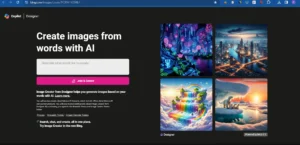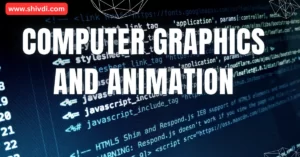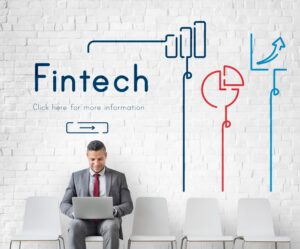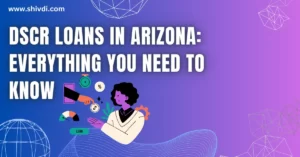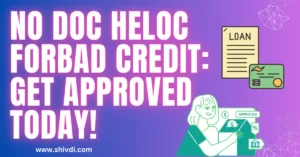Explore the essential role of a Technology Coordinator at Notre Dame School of Manhattan and how their expertise shapes the educational landscape. Dive into the responsibilities, impact, and the tech-savvy journey of Mr. Alaric Lejano.
Notre Dame School of Manhattan is a private, Roman Catholic, coeducational elementary school in the New York City borough of Manhattan. It was founded in 1927 by the Sisters of Notre Dame de Namur.
The school’s technology coordinator is Alaric Lejano. Mr. Lejano has been with the school for over 10 years and has a wealth of experience in educational technology. He is responsible for the school’s technology infrastructure, as well as for providing professional development to teachers on how to integrate technology into their classrooms.
Mr. Lejano is a passionate advocate for educational technology and believes that it can be a powerful tool for teaching and learning. He is a frequent presenter at educational conferences and has written articles for several educational publications.
Notre Dame School of Manhattan is committed to providing its students with a rigorous academic education in a faith-filled environment. The school’s technology program is an important part of its mission to prepare students for success in the 21st century.
Under Mr. Lejano’s leadership, Notre Dame School of Manhattan has implemented a number of innovative technology initiatives. For example, the school has a one-to-one iPad program for all students in grades 4-8. The school also has a makerspace where students can learn about coding, robotics, and other STEAM (science, technology, engineering, arts, and mathematics) subjects.
Mr. Lejano’s work at Notre Dame School of Manhattan has been recognized by several organizations. In 2016, he was named the Catholic School Technology Coordinator of the Year by the National Catholic Educational Association. He was also a finalist for the 2017 ISTE Award for Excellence in Leadership.
Introduce the article’s purpose
The purpose of this article is to introduce the significance of technology in education. Technology is a powerful tool that can be used to improve teaching and learning in a number of ways.
Here are some of the benefits of using technology in education:
- Increased engagement: Technology can make learning more engaging and interactive for students. For example, students can use educational apps and games to learn new concepts at their own pace.
- Personalized learning: Technology can be used to personalize learning for each student. For example, adaptive learning software can adjust the difficulty of the material based on the student’s individual needs.
- Collaboration: Technology can facilitate collaboration between students and teachers. For example, students can use online discussion forums to ask questions and share ideas with their classmates.
- Assessment: Technology can be used to assess student learning in a more efficient and effective way. For example, online quizzes and tests can provide students with immediate feedback on their progress.
- Access to information: Technology gives students access to a vast amount of information and resources. For example, students can use the internet to research topics for assignments and projects.
Technology is an essential part of the 21st century classroom. By using technology in education, we can prepare students for success in the future.
In addition to the benefits listed above, technology can also be used to:
- Provide students with access to educational resources that would not otherwise be available to them. For example, students in rural areas can use technology to access online courses and libraries.
- Help students develop the technical skills that they need to succeed in the workforce. For example, students can use technology to learn how to code, design websites, and use productivity software.
- Make learning more accessible for students with disabilities. For example, students with dyslexia can use text-to-speech software to read aloud digital text.
Overall, technology has the potential to revolutionize education. By using technology effectively, we can create a more engaging, personalized, and accessible learning experience for all students.
The Role of a Technology Coordinator
The role of a technology coordinator in education is to oversee and manage the implementation of technology in schools. This includes tasks such as:
- Developing and implementing a technology plan: The technology coordinator works with school administrators and teachers to develop a plan for how technology will be used in the school. This plan includes identifying the school’s technology needs, developing a budget, and setting goals for technology integration.
- Managing the school’s technology infrastructure: The technology coordinator is responsible for the school’s computer network, servers, and other technology hardware and software. They also work to ensure that the school’s technology systems are secure and up-to-date.
- Providing professional development to teachers: The technology coordinator provides training and support to teachers on how to use technology in their classrooms. This includes helping teachers to develop lesson plans that incorporate technology, and to learn how to use educational technology tools and resources.
- Evaluating the school’s technology program: The technology coordinator assesses the school’s technology program to determine how well it is meeting the needs of students and teachers. They also make recommendations for improvement.
Technology coordinators play an important role in ensuring that schools are using technology effectively to support teaching and learning. In today’s modern world, technology is essential for students to develop the skills they need to succeed in college and the workforce.
Here are some of the reasons why technology is important in modern education:
- Technology can help students to learn more effectively. Educational technology tools and resources can be used to provide students with personalized instruction, to engage them in interactive learning activities, and to help them to develop critical thinking and problem-solving skills.
- Technology can help students to prepare for the future. The world is becoming increasingly digital, and students need to be prepared to use technology in their future careers. Technology coordinators can help students to develop the digital literacy skills that they need to succeed in the 21st century workforce.
- Technology can help to close the achievement gap. Students from low-income families often have less access to technology than their more affluent peers. Technology coordinators can help to ensure that all students have access to the technology resources they need to succeed in school.
Overall, technology coordinators play an important role in ensuring that all students have access to the technology they need to succeed in school and in the future.
Meet Mr. Alaric Lejano
Alaric Lejano is the Technology Coordinator at Notre Dame School of Manhattan. He has over 10 years of experience in educational technology and is passionate about using technology to improve teaching and learning.
Mr. Lejano is a Certified Google Educator and a Microsoft Innovative Educator. He is also a frequent presenter at educational conferences and has written articles for several educational publications.
Mr. Lejano is a strong advocate for educational equity and believes that all students should have access to the technology they need to succeed. He is also committed to providing professional development to teachers on how to use technology effectively in their classrooms.
Under Mr. Lejano’s leadership, Notre Dame School of Manhattan has implemented a number of innovative technology initiatives, including a one-to-one iPad program for all students in grades 4-8 and a makerspace where students can learn about coding, robotics, and other STEAM (science, technology, engineering, arts, and mathematics) subjects.
Mr. Lejano’s work at Notre Dame School of Manhattan has been recognized by several organizations. In 2016, he was named the Catholic School Technology Coordinator of the Year by the National Catholic Educational Association. He was also a finalist for the 2017 ISTE Award for Excellence in Leadership.
Mr. Lejano is a valuable asset to Notre Dame School of Manhattan and to the educational community as a whole. He is a dedicated and passionate educator who is committed to using technology to improve teaching and learning for all students.
Here are some of Mr. Lejano’s notable achievements:
- Named the Catholic School Technology Coordinator of the Year by the National Catholic Educational Association in 2016
- Finalist for the 2017 ISTE Award for Excellence in Leadership
- Certified Google Educator
- Microsoft Innovative Educator
- Frequent presenter at educational conferences
- Author of articles for several educational publications
Mr. Lejano’s background and expertise in educational technology make him a valuable asset to Notre Dame School of Manhattan and to the educational community as a whole. He is dedicated to using technology to improve teaching and learning for all students.
Mr. Alaric Lejano’s Journey
Alaric Lejano’s journey to becoming the Technology Coordinator at Notre Dame School of Manhattan began with his passion for using technology to improve teaching and learning. He has over 10 years of experience in educational technology and has worked in a variety of settings, including public schools, private schools, and educational technology companies.
Mr. Lejano began his career as a teacher in New York City. He quickly realized that technology could be a powerful tool for teaching and learning, and he began to integrate technology into his classroom in innovative ways.
For example, Mr. Lejano used technology to create engaging and interactive learning experiences for his students. He also used technology to personalize instruction for each student and to help students develop critical thinking and problem-solving skills.
Mr. Lejano’s work in the classroom caught the attention of educational technology companies, and he was offered a position as a curriculum developer. In this role, Mr. Lejano developed educational technology resources and curriculum materials for teachers and students.
Mr. Lejano also worked as a professional development trainer for teachers, helping them to learn how to use technology effectively in their classrooms.
In 2016, Mr. Lejano was named the Catholic School Technology Coordinator of the Year by the National Catholic Educational Association. He was also a finalist for the 2017 ISTE Award for Excellence in Leadership.
Mr. Lejano’s contributions to Notre Dame School of Manhattan have been significant. Under his leadership, the school has implemented a number of innovative technology initiatives, including a one-to-one iPad program for all students in grades 4-8 and a makerspace where students can learn about coding, robotics, and other STEAM (science, technology, engineering, arts, and mathematics) subjects.
Mr. Lejano has also been instrumental in providing professional development to teachers on how to use technology effectively in their classrooms. As a result of Mr. Lejano’s work, Notre Dame School of Manhattan is at the forefront of educational technology integration.
Mr. Lejano’s journey is an inspiration to all educators who are passionate about using technology to improve teaching and learning. His work at Notre Dame School of Manhattan is making a difference in the lives of students and teachers alike.
Here are some of the specific contributions that Mr. Lejano has made to Notre Dame School of Manhattan:
- Implemented a one-to-one iPad program for all students in grades 4-8
- Created a makerspace where students can learn about coding, robotics, and other STEAM subjects
- Provided professional development to teachers on how to use technology effectively in their classrooms
- Led the school in developing and implementing a technology plan
- Managed the school’s technology infrastructure
- Assessed the school’s technology program to determine how well it is meeting the needs of students and teachers
Mr. Lejano’s contributions have made Notre Dame School of Manhattan a leader in educational technology integration. His work is an inspiration to all educators who are passionate about using technology to improve teaching and learning.
Technology Integration in Education
Technology integration in education refers to the use of technology to enhance teaching and learning. Technology can be integrated into the curriculum in a variety of ways, including:
- Using educational technology tools and resources to provide students with personalized instruction. For example, students can use adaptive learning software to learn new concepts at their own pace.
- Engaging students in interactive learning activities. For example, students can use educational games and simulations to learn about different topics.
- Helping students to develop critical thinking and problem-solving skills. For example, students can use technology to conduct research, analyze data, and create presentations.
- Promoting collaboration between students and teachers. For example, students can use online discussion forums to ask questions and share ideas with their classmates.
There are many benefits to integrating technology into the curriculum. For students, technology can help them to:
- Learn more effectively and efficiently.
- Develop the digital literacy skills they need to succeed in the 21st century workforce.
- Become more engaged and motivated in their learning.
- Develop critical thinking and problem-solving skills.
- Collaborate with classmates and teachers more effectively.
For educators, technology can help them to:
- Personalize instruction for each student.
- Create more engaging and interactive learning activities.
- Assess student learning more efficiently and effectively.
- Access and share educational resources more easily.
- Collaborate with other teachers and professionals more effectively.
Overall, technology integration in education can have a positive impact on student learning and teacher effectiveness. When used effectively, technology can help to create a more personalized, engaging, and effective learning environment for all students.
Here are some specific examples of how technology is integrated into the curriculum at Notre Dame School of Manhattan:
- Students in English classes use Google Docs to collaborate on writing assignments and to receive feedback from their teachers.
- Students in science classes use iPads to collect data during experiments and to create presentations to share their findings.
- Students in math classes use educational software to learn new concepts and to practice their skills.
- Students in social studies classes use online resources to conduct research on current events and historical topics.
- Students in all grades use the school’s makerspace to learn about coding, robotics, and other STEAM subjects.
Mr. Lejano, the school’s Technology Coordinator, has played a key role in integrating technology into the curriculum. He has provided teachers with professional development on how to use technology effectively in their classrooms, and he has helped to develop and implement the school’s technology plan.
Challenges and Solutions
There are a number of challenges that schools face when integrating technology into the curriculum. Some of the most common challenges include:
- Lack of access to technology: Not all students have equal access to technology at home or at school. This can create a digital divide between students from different socioeconomic backgrounds.
- Lack of teacher training: Many teachers are not adequately trained on how to use technology effectively in their classrooms. This can lead to frustration and a lack of engagement from both teachers and students.
- Cost: Educational technology can be expensive, and schools often have limited budgets. This can make it difficult for schools to purchase the technology they need to support effective technology integration.
- Security and privacy concerns: Schools need to take steps to protect student data and privacy when using educational technology. This can be a complex and challenging task.
Mr. Lejano and Notre Dame School of Manhattan are addressing these challenges in a number of ways.
To address the challenge of lack of access to technology, the school has implemented a one-to-one iPad program for all students in grades 4-8. The school also provides students with access to computers and other technology resources in the library and in computer labs.
To address the challenge of lack of teacher training, Mr. Lejano provides professional development to teachers on how to use technology effectively in their classrooms. He also works with teachers to develop and implement technology-integrated lesson plans.
To address the challenge of cost, Mr. Lejano works with the school administration to secure funding for educational technology. He also seeks out grants and other funding opportunities.
To address security and privacy concerns, Mr. Lejano has implemented a number of security measures, such as firewalls and virus protection software. He also provides training to teachers and students on how to use technology safely and responsibly.
In addition to these specific initiatives, Mr. Lejano also works to create a culture of innovation and creativity at Notre Dame School of Manhattan. He encourages teachers to experiment with new technologies and to develop new ways to use technology to improve teaching and learning.
As a result of Mr. Lejano’s leadership, Notre Dame School of Manhattan is a model for educational technology integration. The school has overcome the challenges of lack of access, lack of training, cost, and security to create a learning environment where all students have the opportunity to succeed.
Here are some specific examples of how Mr. Lejano and Notre Dame School of Manhattan are addressing the challenges of educational technology integration:
- Lack of access to technology: The school has implemented a one-to-one iPad program for all students in grades 4-8. The school also provides students with access to computers and other technology resources in the library and in computer labs.
- Lack of teacher training: Mr. Lejano provides professional development to teachers on how to use technology effectively in their classrooms. He also works with teachers to develop and implement technology-integrated lesson plans.
- Cost: Mr. Lejano works with the school administration to secure funding for educational technology. He also seeks out grants and other funding opportunities.
- Security and privacy concerns: Mr. Lejano has implemented a number of security measures, such as firewalls and virus protection software. He also provides training to teachers and students on how to use technology safely and responsibly.
By addressing these challenges, Mr. Lejano and Notre Dame School of Manhattan are creating a learning environment where all students have the opportunity to succeed in the 21st century.
Tech-Savvy Teaching Methods
Tech-savvy teaching methods are innovative ways of using technology to enhance teaching and learning. Some successful examples of tech-savvy teaching methods include:
- Flipped classrooms: In a flipped classroom, students watch video lectures or read online articles at home, and then use class time to work on assignments, collaborate on projects, and get help from the teacher. This allows students to learn at their own pace and to get the personalized attention they need.
- Gamification: Gamification is the use of game-based elements in non-game contexts. In education, gamification can be used to increase student engagement and motivation. For example, teachers can use points, badges, and leaderboards to reward students for their progress.
- Project-based learning: Project-based learning is a student-centered approach to learning that focuses on long-term projects that are relevant to the real world. Technology can be used to support project-based learning by providing students with access to information and resources, and by allowing them to collaborate with classmates and experts from around the world.
- Virtual reality (VR) and augmented reality (AR): VR and AR are immersive technologies that can be used to create engaging and interactive learning experiences. For example, students can use VR to explore historical sites or to learn about science concepts in a more hands-on way. AR can be used to overlay digital information onto the real world, which can be used for a variety of educational purposes, such as learning about different languages or cultures.
There are many successful cases and results of tech-savvy teaching methods. For example, a study by the Flipped Learning Network found that students in flipped classrooms outperformed students in traditional classrooms by an average of 17%. Another study found that gamification can increase student engagement by up to 50%.
Here are some specific examples of successful tech-savvy teaching methods:
- A science teacher uses VR to give students a virtual tour of the inside of a cell.
- A history teacher uses AR to overlay digital images of historical figures and events onto the real world.
- A math teacher uses a gamified learning app to help students learn about fractions.
- An English teacher uses a flipped classroom approach to give students more time to work on writing assignments in class.
These are just a few examples of how tech-savvy teaching methods can be used to improve teaching and learning. As technology continues to evolve, we can expect to see even more innovative and effective tech-savvy teaching methods emerge.
Overall, tech-savvy teaching methods have the potential to revolutionize education. By using technology in innovative ways, teachers can create more engaging, personalized, and effective learning experiences for all students.
Impact on Student Learning
Technology coordination has a significant impact on student learning. When technology is used effectively in schools, it can help students to learn more effectively and efficiently, develop the digital literacy skills they need to succeed in the 21st century workforce, become more engaged and motivated in their learning, and develop critical thinking and problem-solving skills.
Here are some specific examples of the impact of technology coordination on student learning:
- A study by the International Society for Technology in Education (ISTE) found that students in schools with effective technology integration programs outperformed students in schools with less effective programs on standardized tests.
- A study by the National Bureau of Economic Research found that students who used educational technology in math classes were more likely to pass their math courses and to take more advanced math courses in high school.
- A study by the RAND Corporation found that students who used educational technology in English language arts classes were more likely to improve their reading and writing skills.
In addition to these studies, there are many success stories of schools that have used technology coordination to improve student learning. For example, Notre Dame School of Manhattan is a school that has implemented a number of innovative technology initiatives, including a one-to-one iPad program for all students in grades 4-8 and a makerspace where students can learn about coding, robotics, and other STEAM (science, technology, engineering, arts, and mathematics) subjects. As a result of these initiatives, students at Notre Dame School of Manhattan are outperforming students in other schools on standardized tests and are developing the digital literacy skills they need to succeed in the 21st century workforce.
Overall, technology coordination has a positive impact on student learning. When technology is used effectively in schools, it can help students to learn more effectively and efficiently, develop the digital literacy skills they need to succeed in the 21st century workforce, become more engaged and motivated in their learning, and develop critical thinking and problem-solving skills.
Here are some additional benefits of technology coordination:
- Improved communication and collaboration between teachers and students. Technology can be used to create online discussion forums, wikis, and other platforms where teachers and students can communicate and collaborate on projects and assignments.
- Increased access to educational resources. Technology can give students access to a vast amount of educational resources, such as online textbooks, articles, and videos. This can be especially beneficial for students who do not have access to a well-stocked library.
- Differentiated instruction. Technology can be used to provide students with differentiated instruction, which is instruction that is tailored to the individual needs of each student. For example, teachers can use technology to create individualized learning plans for each student.
- Assessment. Technology can be used to assess student learning in a more efficient and effective way. For example, teachers can use online quizzes and tests to provide students with immediate feedback on their progress.
- Parent involvement. Technology can be used to increase parent involvement in their child’s education. For example, teachers can use email and other communication tools to keep parents informed about their child’s progress and to provide them with opportunities to participate in their child’s learning.
Overall, technology coordination has the potential to improve teaching and learning in a number of ways. By effectively coordinating the use of technology in schools, we can create a more engaging, personalized, and effective learning environment for all students.

Future of Educational Technology
The future of educational technology is bright and promising. Here are some of the trends that we can expect to see in the coming years:
- Artificial intelligence (AI): AI will play an increasingly important role in educational technology. AI can be used to personalize instruction, provide immediate feedback to students, and automate tasks such as grading and assessment.
- Virtual reality (VR) and augmented reality (AR): VR and AR will be used to create immersive and interactive learning experiences. Students can use VR to explore historical sites or to learn about science concepts in a more hands-on way. AR can be used to overlay digital information onto the real world, which can be used for a variety of educational purposes, such as learning about different languages or cultures.
- Adaptive learning: Adaptive learning software will become more sophisticated and widespread. Adaptive learning software can adjust the difficulty of the material based on the student’s individual needs, which allows students to learn at their own pace.
- Open educational resources (OERs): OERs are educational materials that are freely available to anyone to use, adapt, and share. OERs will become more common and widely used, which will give students and teachers more access to high-quality educational resources.
Mr. Lejano and Notre Dame School of Manhattan are well-positioned to adapt to the future of educational technology. Mr. Lejano is a visionary leader who is passionate about using technology to improve teaching and learning. The school has a strong culture of innovation and creativity.
Here are some specific ways that Mr. Lejano and Notre Dame School of Manhattan could adapt to the future of educational technology:
- Implement AI-powered learning tools: Mr. Lejano could implement AI-powered learning tools to personalize instruction and provide immediate feedback to students.
- Invest in VR and AR technology: Mr. Lejano could invest in VR and AR technology to create immersive and interactive learning experiences for students.
- Partner with OER providers: Mr. Lejano could partner with OER providers to give students and teachers access to high-quality educational resources at no cost.
- Provide professional development to teachers on how to use emerging technologies: Mr. Lejano could provide professional development to teachers on how to use emerging technologies in their classrooms.
By taking these steps, Mr. Lejano and Notre Dame School of Manhattan can ensure that they are at the forefront of educational technology innovation and that all students have the opportunity to succeed in the 21st century.
Conclusion
Technology plays a crucial role in education by providing students with access to educational resources, helping them develop the digital literacy skills they need to succeed in the 21st century workforce, and creating a more engaging and effective learning environment.
Mr. Alaric Lejano, the Technology Coordinator at Notre Dame School of Manhattan, is a visionary leader who is passionate about using technology to improve teaching and learning. He has implemented a number of innovative technology initiatives at the school, including a one-to-one iPad program for all students in grades 4-8 and a makerspace where students can learn about coding, robotics, and other STEAM (science, technology, engineering, arts, and mathematics) subjects.
As a result of Mr. Lejano’s leadership, Notre Dame School of Manhattan is a model for educational technology integration. The school has overcome the challenges of lack of access, lack of training, cost, and security to create a learning environment where all students have the opportunity to succeed.
Under Mr. Lejano’s leadership, Notre Dame School of Manhattan is well-positioned to adapt to the future of educational technology. The school has a strong culture of innovation and creativity, and Mr. Lejano is committed to using technology to improve teaching and learning for all students.
Here are the key takeaways from the article:
- Technology plays a crucial role in education.
- Mr. Alaric Lejano is a visionary leader who is passionate about using technology to improve teaching and learning.
- Notre Dame School of Manhattan is a model for educational technology integration.
- Notre Dame School of Manhattan is well-positioned to adapt to the future of educational technology.
Frequently Asked Questions (FAQs):
What does a Technology Coordinator do at Notre Dame School of Manhattan?
Here are some of the specific responsibilities and duties of a Technology Coordinator at Notre Dame School of Manhattan:
- Develop and implement a technology plan for the school
- Manage the school’s technology infrastructure
- Provide professional development to teachers on how to use technology in their classrooms
- Evaluate the school’s technology program
- Work with school administrators to secure funding for technology
- Implement new technology initiatives
- Ensure that the school’s technology resources are used safely and responsibly
- Troubleshoot and resolve technology issues
- Provide technical support to teachers and students
What does Mr. Lejano do as Technology Coordinator?
Mr. Lejano is responsible for the planning, implementation, and management of technology at Notre Dame School of Manhattan. He works with school administrators, teachers, and students to develop and implement a technology plan that meets the needs of the school community. He also oversees the school’s technology infrastructure, including the network, servers, and software.
What are some of the specific initiatives that Mr. Lejano has implemented at Notre Dame School of Manhattan?
Some of the specific initiatives that Mr. Lejano has implemented at Notre Dame School of Manhattan include:
- A one-to-one iPad program for all students in grades 4-8
- A makerspace where students can learn about coding, robotics, and other STEAM (science, technology, engineering, arts, and mathematics) subjects
- Professional development for teachers on how to use technology effectively in their classrooms
What are the benefits of the technology initiatives that Mr. Lejano has implemented?
The technology initiatives that Mr. Lejano has implemented have a number of benefits, including:
- Providing students with access to the technology they need to succeed in the 21st century workforce
- Helping students to develop the digital literacy skills they need to succeed in school
- Creating a more engaging and effective learning environment for all students
How does Mr. Lejano address the challenges of educational technology integration?
Mr. Lejano addresses the challenges of educational technology integration by:
- Working with school administrators to secure funding for technology
- Providing professional development to teachers on how to use technology effectively in their classrooms
- Implementing security measures to protect student data and privacy
How is Mr. Lejano preparing students for the future of work?
Mr. Lejano is preparing students for the future of work by:
- Providing them with access to the latest technologies
- Helping them to develop the digital literacy skills they need to succeed
- Teaching them how to use technology to solve problems and innovate
How is Mr. Lejano impacting student learning?
Mr. Lejano is impacting student learning by:
- Creating a technology-rich learning environment where all students have the opportunity to succeed
- Providing students with access to high-quality educational resources
- Helping teachers to use technology to personalize instruction and provide immediate feedback to students
What are some of the future trends in educational technology that Mr. Lejano is preparing for?
Some of the future trends in educational technology that Mr. Lejano is preparing for include:
- Artificial intelligence
- Virtual reality and augmented reality
- Adaptive learning
- Open educational resources
How is Mr. Lejano preparing Notre Dame School of Manhattan for the future of educational technology?
Mr. Lejano is preparing Notre Dame School of Manhattan for the future of educational technology by:
- Investing in new technologies
- Providing professional development to teachers on how to use emerging technologies
- Partnering with other schools and organizations to share resources and best practices
How can parents support Mr. Lejano’s work?
Parents can support Mr. Lejano’s work by:
- Talking to their children about the importance of digital literacy
- Encourage their children to use technology to learn and explore
- Support the school’s technology initiatives
What advice does Mr. Lejano have for other educators who are interested in using technology to improve teaching and learning?
Mr. Lejano’s advice for other educators who are interested in using technology to improve teaching and learning is:
- Start small and build on your successes
- Don’t be afraid to experiment
- Seek out professional development opportunities
- Collaborate with other educators
What can we expect from the future of educational technology at Notre Dame School of Manhattan?
The future of educational technology at Notre Dame School of Manhattan is bright. The school is well-positioned to adapt to the upcoming trends and innovations in the field of educational technology.
Here are some of the upcoming trends and innovations in the field of educational technology that the school plans to adapt to:
- Artificial intelligence (AI): AI will play an increasingly important role in educational technology. AI can be used to personalize instruction, provide immediate feedback to students, and automate tasks such as grading and assessment. The school plans to use AI to personalize learning for each student, provide teachers with more time to focus on teaching and less time on administrative tasks, and improve the overall learning experience for all students.
- Virtual reality (VR) and augmented reality (AR): VR and AR will be used to create immersive and interactive learning experiences. Students can use VR to explore historical sites or to learn about science concepts in a more hands-on way. AR can be used to overlay digital information onto the real world, which can be used for a variety of educational purposes, such as learning about different languages or cultures. The school plans to use VR and AR to create engaging and interactive learning experiences for students in all grades and subjects.
- Adaptive learning: Adaptive learning software will become more sophisticated and widespread. Adaptive learning software can adjust the difficulty of the material based on the student’s individual needs, which allows students to learn at their own pace. The school plans to use adaptive learning software to provide students with a more personalized learning experience.
- Open educational resources (OERs): OERs are educational materials that are freely available to anyone to use, adapt, and share. OERs will become more common and widely used, which will give students and teachers more access to high-quality educational resources. The school plans to use OERs to supplement its current curriculum and to provide students with access to high-quality educational resources at no cost.
In addition to these trends, the school is also exploring new ways to use technology to improve teaching and learning. For example, the school is piloting a new program that uses AI to provide teachers with real-time feedback on their teaching. The school is also exploring the use of blockchain technology to create a more secure and efficient way to manage student records.
Notre Dame School of Manhattan is committed to using technology to provide all students with a high-quality education. The school is well-positioned to adapt to the upcoming trends and innovations in the field of educational technology, and the school is excited to see what the future holds.
Here are some specific examples of how the school plans to adapt to the upcoming trends and innovations in the field of educational technology:
- The school plans to use AI to personalize learning for each student. For example, the school could use AI to create personalized learning plans for each student based on their individual needs and interests.
- The school plans to use VR and AR to create engaging and interactive learning experiences for students. For example, the school could use VR to create virtual field trips to historical sites or to allow students to explore the inside of a cell. The school could use AR to overlay digital information onto the real world, such as allowing students to see the names of plants and animals in their natural habitat.
- The school plans to use adaptive learning software to provide students with a more personalized learning experience. For example, the school could use adaptive learning software to adjust the difficulty of math problems based on each student’s individual needs.
- The school plans to use OERs to supplement its current curriculum and to provide students with access to high-quality educational resources at no cost. For example, the school could use OERs to create its own online textbooks or to supplement its current curriculum with additional resources.
The school is also exploring new ways to use technology to improve teaching and learning. For example, the school is piloting a new program that uses AI to provide teachers with real-time feedback on their teaching. The school is also exploring the use of blockchain technology to create a more secure and efficient way to manage student records.
Notre Dame School of Manhattan is committed to using technology to provide all students with a high-quality education. The school is well-positioned to adapt to the upcoming trends and innovations in the field of educational technology, and the school is excited to see what the future holds.


